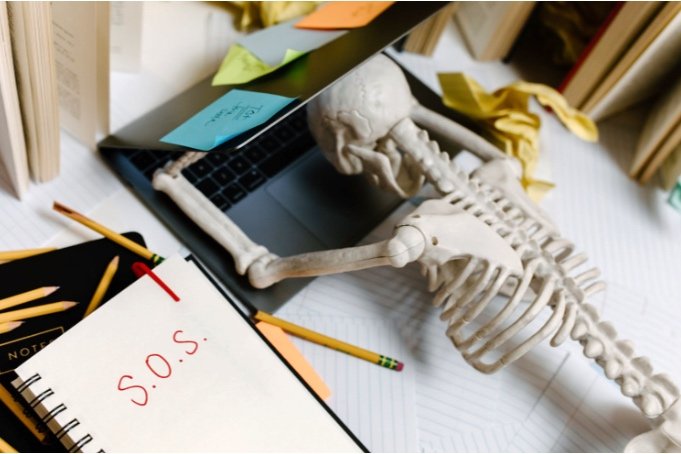How to Shift From ‘Doing’ to ‘Being’
It’s time to burn your ‘to-do’ list. I know. It sounds extreme. But seriously - we have seen far too much burnout already this year, and it’s only March! And in many cases, burnout is driven by unrealistic ‘to-do’ lists. Lists that are miles long. Lists that are not achievable in the allocated timeframes. And lists with more ‘to-dos’ than the Who’s in Whoville.
Image credit: Pexels
And the challenge is we often get caught up in the cycle of ‘doing’ more, to ‘have’ more. We fall into a trap that has us thinking: “if only I can get all those things done, then I will have the things I want and ultimately feel better.” Yet ‘doing’ more is not the answer. What might happen instead if you were to pause and reflect on who you might need to 'be' to achieve your goals - rather than all the things you need to ‘do’?
Now that's a mindset shift worth considering.
This article contains:
About the BE-DO-HAVE Coaching Model
The BE-DO-HAVE Coaching Model helps reframe your focus from 'doing' to 'being'. As a framework, it puts ‘mindest’ at the heart of the conversation and prompts consideration of attitudes, values and beliefs that may best support you in reaching your goals. The BE-DO-HAVE Coaching Model challenges two powerful and conflicting frames of reference.
The HAVE-DO-BE frame: "When I HAVE more, then I'll DO more, and BE happier". This is a common cycle for those waiting for external circumstances to change in order to move forward with their goals. It might sound like: when I have some more clarity on strategy and more resources on my team, then I’ll start focusing on the growth and development of my team members.
Secondly, the DO-HAVE-BE frame: "When I DO more, then I'll HAVE more, and BE more satisfied". Workaholics will recognise this one! This frame can feed into a pattern of constantly doing more and a reliance on 'busyness' for self-identity. It might sound like: once I get through my current workload, then I’ll have some space to focus on my own development. Right now, I can’t think about that stuff.
To break these thinking patterns, the BE-DO-HAVE frame prompts the game-changing question, which is not 'what do I need to HAVE?' or ‘what do I need to DO?’ - but rather, ‘who do I need to BE?’
The Game-Changing Question: Who Do I Need To BE?
“The gift of the wayfinder’s journey is not the arrival at a destination; it is who we become along the way as we fulfil our potential.”
~Wayfinding Leadership, Prof Chellie Spiller, Hoturoa Barclay-Kerr, John Panoho
It is in the BE-DO-HAVE frame of thinking that the transformation work begins to take place.
What kind of person would have access to the outcomes I want to achieve?
If I were to start thinking like them, what needs to shift for me?
By creating a way of being in alignment with your goal, the rest then starts to take care of itself.
Here’s What the Model Looks Like in Action
Firstly, at a high level, you need to get clear on what it is you want to achieve. What does success look like for you this year?
For me, I am focusing on stepping into some new facilitation opportunities - including week-long residentials and a lot more virtual delivery. I have some technical targets defined by client impact (feedback) and financial deliverables, alongside the number of facilitation, design and coaching hours I want to achieve. But more importantly than all of these technical measures, is who I need to be as I lean into my key areas of focus this year. What kind of person would have access to the kinds of outcomes I want to achieve?
Here’s where I’ve landed. In 2022 I need to be vulnerable, flexible and kind. The vulnerability allows me to step safely into new situations and feel comfortable in the space of discomfort. Flexibility allows me to be brave with my leadership designs and to hold feedback and iterations lightly as part of an often complex design process. And finally, kindness allows me to meet people where they are at this year. I am noticing high levels of exhaustion off the back of the two-year pandemic, alongside a distinct divide in views and political or pandemic related opinions. As such, I have committed to being kind and inclusive in my work, to support and meet people where they are at, no matter their views.
Curious to Give This One a Go?
If you like the sound of the model and how it might work for you and your team, then check out our done-for-you toolkit which includes:
A how-to Resource Guide.
A set of Coaching Questions.
Images for use in your presentations or workbooks.
And a reflection template ready for you to add your brand and use with your coachees.
So cross out that heading on your ‘to-do’ list, and see how it feels to create a ‘to-be’ list instead.
What is it you want to achieve this year?
What will acheiving this goal mean to you?
And most importantly, who do you need to be to make it happen?
Enjoy the reflections,




